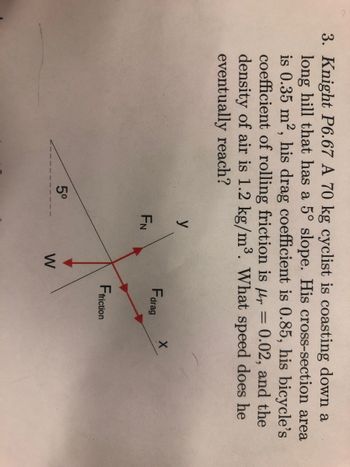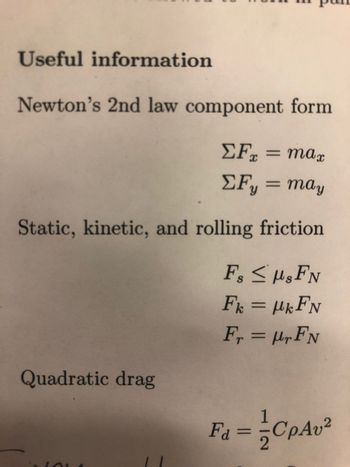Question
Help with the following question
Note: the second photo is only for equations to help you solve.

Transcribed Image Text:3. Knight P6.67 A 70 kg cyclist is coasting down a
long hill that has a 5° slope. His cross-section area
is 0.35 m², his drag coefficient is 0.85, his bicycle's
coefficient of rolling friction is r = 0.02, and the
density of air is 1.2 kg/m³. What speed does he
eventually reach?
5⁰
y
FN
W
Farag
Ffriction
X

Transcribed Image Text:Useful information
Newton's 2nd law component form
ΣΕ = max
X
ΣFy = may
Static, kinetic, and rolling friction
Quadratic drag
F, < μgFN
Fk = μk FN
Fr=r FN
F₁ = CpAv²
Expert Solution
This question has been solved!
Explore an expertly crafted, step-by-step solution for a thorough understanding of key concepts.
This is a popular solution
Trending nowThis is a popular solution!
Step by stepSolved in 4 steps

Knowledge Booster
Similar questions
- Question 1 using the solution template. both attachedarrow_forwardi need the answers to d,f,g,harrow_forwardPlease answer question and just send me the paper solutions asap dont type the answer question and just ex2 answer all the parts please faster and use the equation from picture please asaparrow_forward
arrow_back_ios
arrow_forward_ios